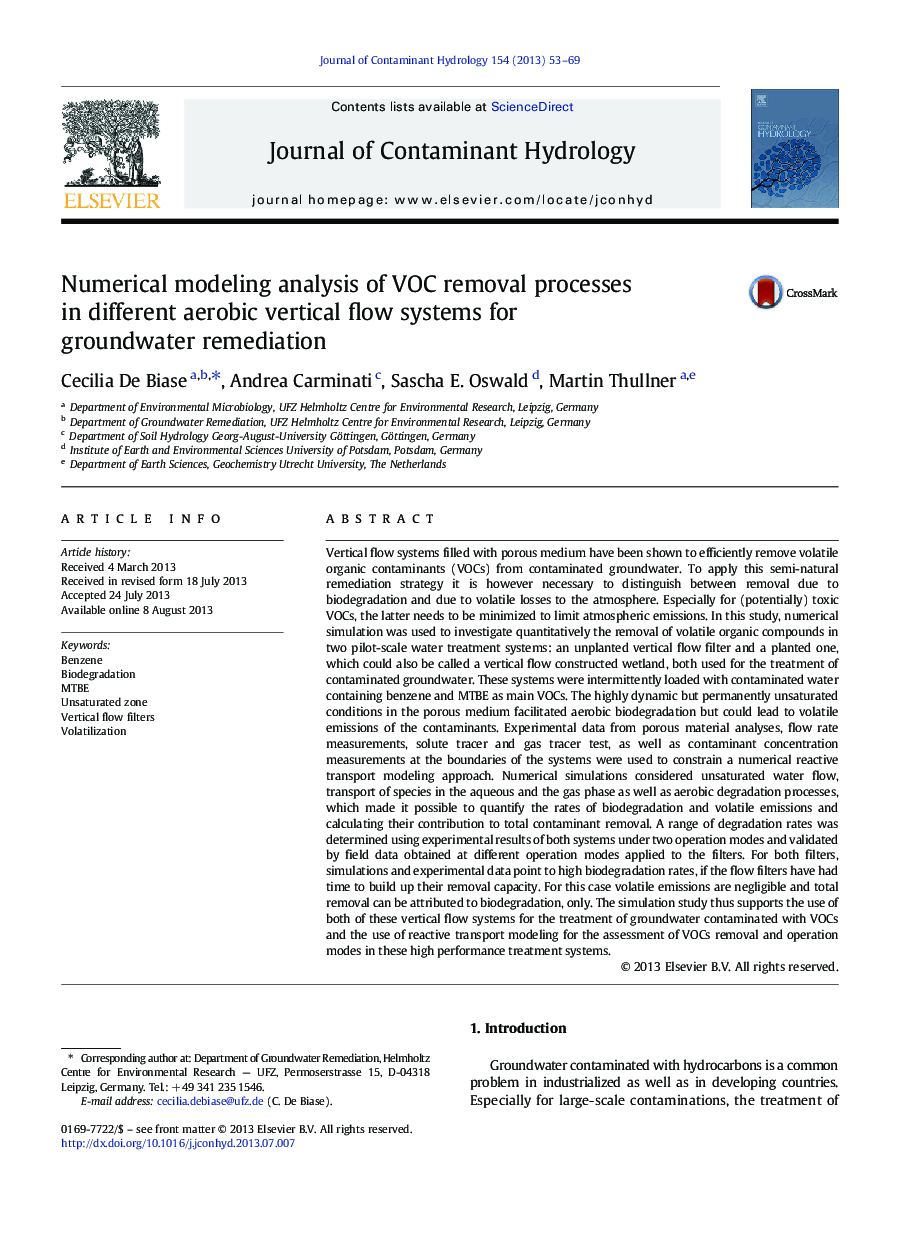| کد مقاله | کد نشریه | سال انتشار | مقاله انگلیسی | نسخه تمام متن |
|---|---|---|---|---|
| 4546633 | 1627053 | 2013 | 17 صفحه PDF | دانلود رایگان |

• Numerical simulation of biodegradation and transport in water phase and gas phase
• Model able to describe dynamic conditions in unsaturated vertical flow systems
• Biodegradation dominates VOC removal in studied vertical flow systems.
• Biodegradation rates high enough to avoid volatile emissions to the atmosphere
Vertical flow systems filled with porous medium have been shown to efficiently remove volatile organic contaminants (VOCs) from contaminated groundwater. To apply this semi-natural remediation strategy it is however necessary to distinguish between removal due to biodegradation and due to volatile losses to the atmosphere. Especially for (potentially) toxic VOCs, the latter needs to be minimized to limit atmospheric emissions. In this study, numerical simulation was used to investigate quantitatively the removal of volatile organic compounds in two pilot-scale water treatment systems: an unplanted vertical flow filter and a planted one, which could also be called a vertical flow constructed wetland, both used for the treatment of contaminated groundwater. These systems were intermittently loaded with contaminated water containing benzene and MTBE as main VOCs. The highly dynamic but permanently unsaturated conditions in the porous medium facilitated aerobic biodegradation but could lead to volatile emissions of the contaminants. Experimental data from porous material analyses, flow rate measurements, solute tracer and gas tracer test, as well as contaminant concentration measurements at the boundaries of the systems were used to constrain a numerical reactive transport modeling approach. Numerical simulations considered unsaturated water flow, transport of species in the aqueous and the gas phase as well as aerobic degradation processes, which made it possible to quantify the rates of biodegradation and volatile emissions and calculating their contribution to total contaminant removal. A range of degradation rates was determined using experimental results of both systems under two operation modes and validated by field data obtained at different operation modes applied to the filters. For both filters, simulations and experimental data point to high biodegradation rates, if the flow filters have had time to build up their removal capacity. For this case volatile emissions are negligible and total removal can be attributed to biodegradation, only. The simulation study thus supports the use of both of these vertical flow systems for the treatment of groundwater contaminated with VOCs and the use of reactive transport modeling for the assessment of VOCs removal and operation modes in these high performance treatment systems.
Figure optionsDownload as PowerPoint slide
Journal: Journal of Contaminant Hydrology - Volume 154, November 2013, Pages 53–69